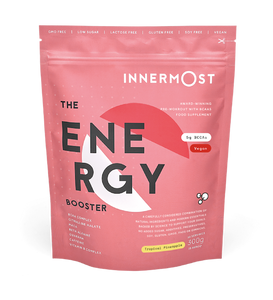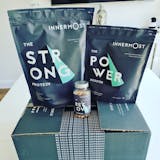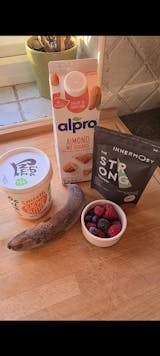With everything that goes into a daily schedule, the commitments of a busy lifestyle can mean it’s pretty hard (and sometimes impossible) to make time to exercise. It can also be hard to find the motivation to exercise after a long day even when you do have the time. It can be a really vicious cycle.
With that in mind, you may be searching for some tips on how to find time in the day to exercise, correct? Or maybe some tips on how to extend the hours in the day so that you have enough time to get everything done?
Well. Whilst we’d be millionaires if we had the answer to the second question (although The Focus Capsules might be able to help with that one), we can definitely help you with the first. Figuring out how to make time to exercise can be pretty difficult, but we’ve got five tips below that might just help you when it comes to fitting in fitness.
How to make time to exercise
If we could give you just one piece of advice: preparation is key. Planning and scheduling is the only way to successfully stay on track, and staying on track and remaining consistent is absolutely the quickest way to smashing your fitness goals.
They say it takes 21 days to make a habit, so if you can choose and apply one of our below five tips to fitting in exercise to your life, we promise that after those initial three weeks, making time for exercise will become like second nature.
Here’s our top five tips for when it comes to making time for exercise…
- Switch up your commute
Wondering how to fit the gym in with work? Think about your commute.
The average commute is around 62 minutes in the United Kingdom. That’s over two hours a day that we are commuting. Not only is that a huge chunk of the day, but it’s two hours of the day that could be spent exercising… potentially.
If you could switch up your commute to walk, cycle or run (maybe all, but even part of the way), this somewhat redundant time can be used to not only get you where you need to be, but assist you in fitting in fitness to your busy day.
Granted, if you are commuting over an hour a day, it’s likely you are using a train service or perhaps driving yourself to your destination… but this doesn’t mean that you can incorporate some level of exercise into your day. Park slightly further away, or maybe get off at an earlier stop and walk, run or cycle the rest of the way. Every little helps.
- Set an earlier alarm (sorry)
Whilst this is probably the tip that nobody wanted to hear, a great way of making time for exercise is to set your alarm earlier to give yourself extra time in the day.
Getting up earlier not only provides you with a great chunk of extra time to get your workout in, but allows you to avoid the morning rush hour, give your body time to prepare for the day, and allows you to slow down a bit and avoid the awful morning rush that comes with those extra ten minutes in bed.
Gym classes start as early as 5am, offering you the perfect opportunity to get an hour of exercise in before your commute and work. If classes aren’t your thing, though, there’s nothing better than a sunrise run or cycle. Seriously! Try it.
- Make the most of your lunch break
Stop using your lunchbreak to just sit and scroll on your social media channel of choice.
Make a conscious effort to leave your desk, office or home workspace and get out and about. Go on a walk, run, cycle or even lunchtime swim during your lunch break and really make the most of your lunch hour. The best part about this strategy is no early alarm, no late finish time… just time to yourself in the middle of the work day to not only smash out your workout for the day, but have some well-deserved time to yourself in amongst the office chaos.
Sounds good (and productive) to us.
- Make every task count
Waiting for your food to cook in the microwave? Do some star jumps. You may look a little crazy in the shared office kitchen, but so be it. No pain no gain, right?
Want to watch your favourite TV show after work? Why not watch it whilst on the treadmill at the gym. Need to take the dog for a walk? Make that lap round the field two laps. Need to grab some milk and bread from the store? Walk, don’t drive.
Little changes here and there add up to an overall healthier and more active lifestyle. At the end of the day, fitting in exercise doesn’t strictly refer to going to the gym or heading out for a run. Like we said… every little helps.
- Be strict with your schedule
It’s time to start treating your exercise schedule like your work schedule. Got a gym class booked for 6pm? It’s now non-negotiable, just like that end-of-quarter sales meeting you’ve got pencilled in your calendar.
Too often we fall victim to the post-work social calling (aka a trip to the pub), or even just the temptation of our sofa after work, which means that the scheduled post-work workout gets thrown out the window. Not anymore.
If you’ve scheduled a workout, stick to it. Don’t sack off your gym schedule for something better (or nothing at all). It’s a commitment you’ve made that is just as important as those daily meetings, only this time, it’s a commitment to yourself. Making time for exercise is just as important as everything else, as it’s key for your health, wellbeing, and overall performance after all!
Summary
So. You wanted to know how to exercise with a busy schedule… we hope we’ve answered your question. Whilst it can be tempting to cancel, post-pone or even neglect our exercise routines as a result of the demands of work, relationships or otherwise, fitting in exercise needs to become a priority. Period.
If you’re struggling or are unsure of how to make time for exercise, give one (or all) of our above tips a go. Find out which tip for fitting in exercise works best for you and start your fitness schedule. Exercise and working out is a hugely important part of your schedule, so it’s time to start treating exercise like a priority.
References























